Reptile world
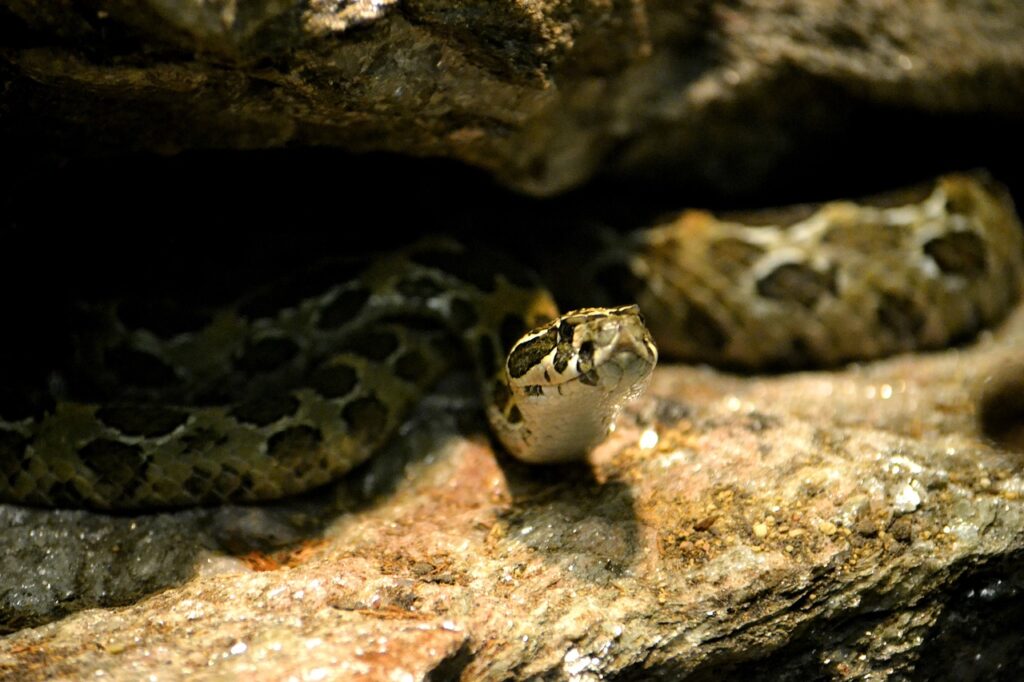
YELLOW ANACONDA
Eunectes notaeus
The yellow anaconda is smaller than the better known green anaconda. It usually reaches lengths of between 2.5m and 4m and a weight that can exceed 40kg, with females being larger than males.
It is an ambush hunter and a constrictor. It hides in the water and among vegetation to attack passing prey. When it catches its prey, it begins to wrap its body around it and begins to contract, then swallows the prey’s head first by unhinging its jaws.
It is distributed in eastern Bolivia, Paraguay, western Brazil, northeastern Argentina.
¿Did you know?
Anacondas do not lay eggs; instead, they give birth to live young. The young are attached to a yolk sac and surrounded by a transparent membrane, not a shell, as they develop in their mother’s body.
GREEN ANACONDA
Eunectes murinus
The green anaconda is a species of constrictor snake of the boa family. It is endemic to the tropical rivers of South America.
Of all the snakes, this is the largest as it can reach a maximum weight of 85kg and rivals the reticulated python for the title of the world’s largest snake, which is usually longer but less bulky.
The gestation period of these reptiles is 6 months, after which 20 to 40 young are born.
¿Did you know?
Digestion of large prey can take several weeks, during which time the snake is almost dormant and sleeping on a branch or by the water.
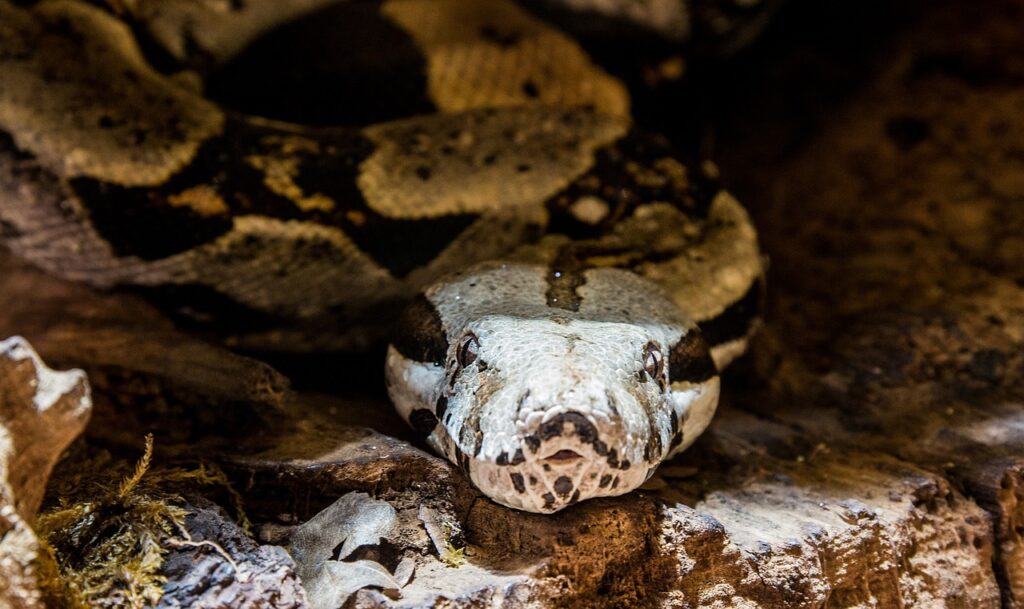
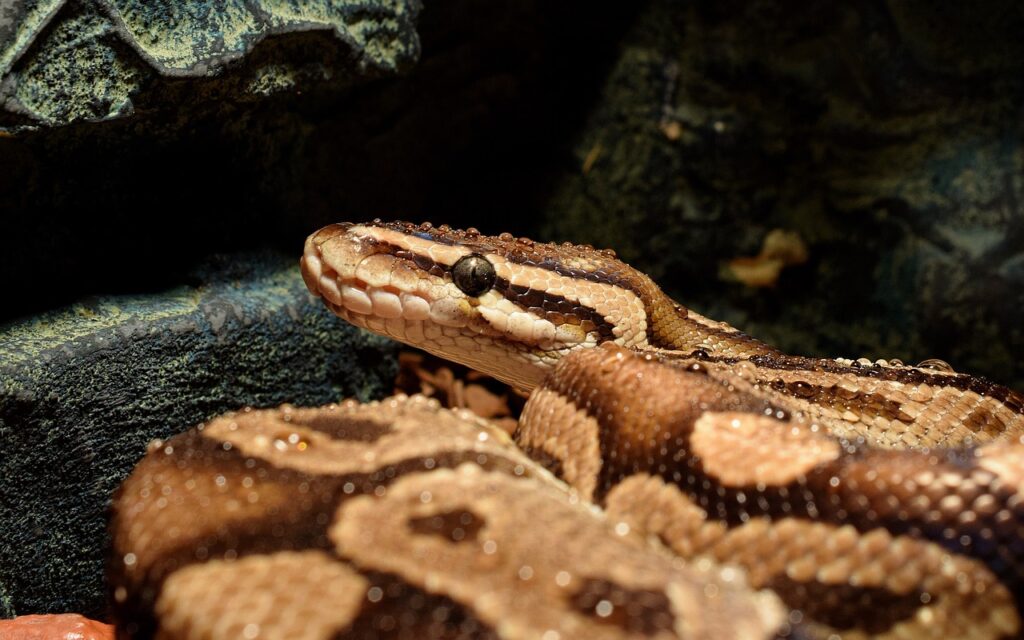
BORNEO SHORT-TAILED PYTHON
Python breitensteini
The Bornean python is a non-venomous snake species endemic to the island of Borneo. It is usually found at low elevations, in poorly drained floodplains or on the edges of swampy areas; artificial irrigation of agricultural land has also provided suitable habitat.
This is a fascinating species of python known for its distinctive characteristics and behaviour. They are famous for their stocky build and short tails in relation to their body length.
Their colouring varies widely, often showing intricate patterns of earthy tones such as browns, blacks and creams, which provide effective camouflage in their rainforest habitats.
¿Did you know?
Its scientific name is a tribute to Heinnrich Breitenstein (1848-1930), a German physician and naturalist who studied the reptiles and amphibians of Borneo.
INDIAN PYTHON
Python molurus
It is a large python species native to the tropical and subtropical regions of the Indian subcontinent and Southeast Asia. Although smaller than its close relative, the Burmese python, it is still one of the largest snakes in the world.
It is generally lighter in colour than the Burmese python and usually reaches up to 4 metres in length and a maximum weight of 50kg. The life expectancy of this reptile is more than 20 years.
The Indian python is classified as Near Threatened on the IUCN Red List due to a 30% population decline during the decade 2010-2020, caused by habitat loss, overexploitation and lack of conservation action.
The female can lay up to 100 eggs, and incubation lasts approximately 60 days.
¿Did you know?
Pythons have no venom and kill their prey by strangulation.
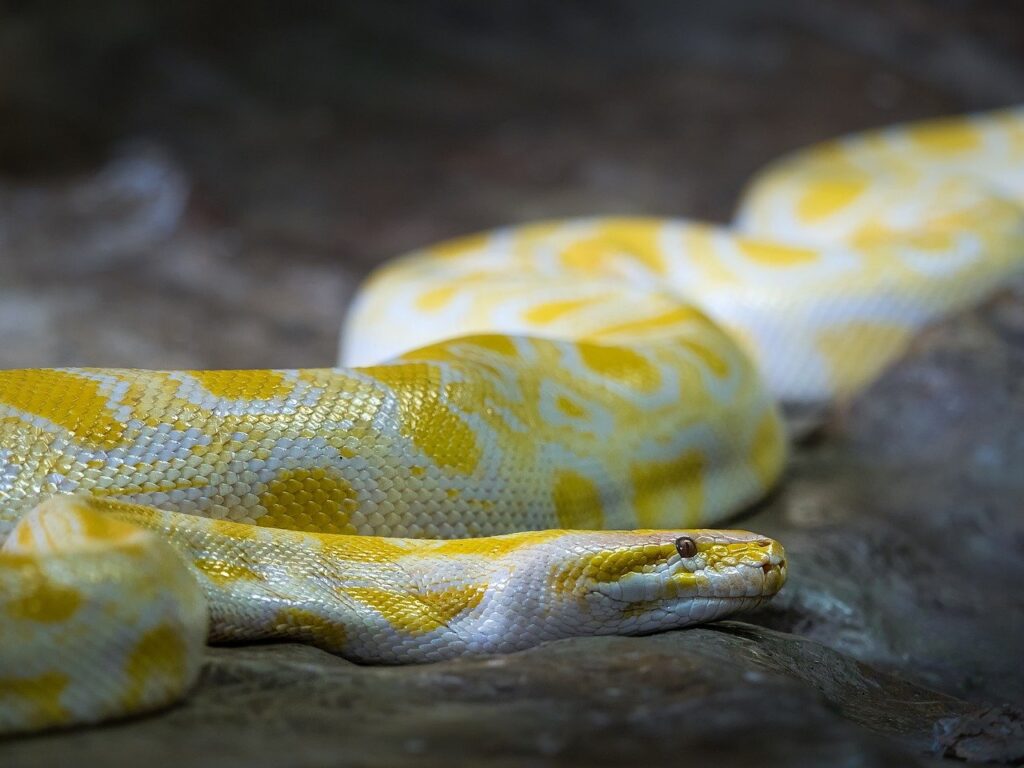
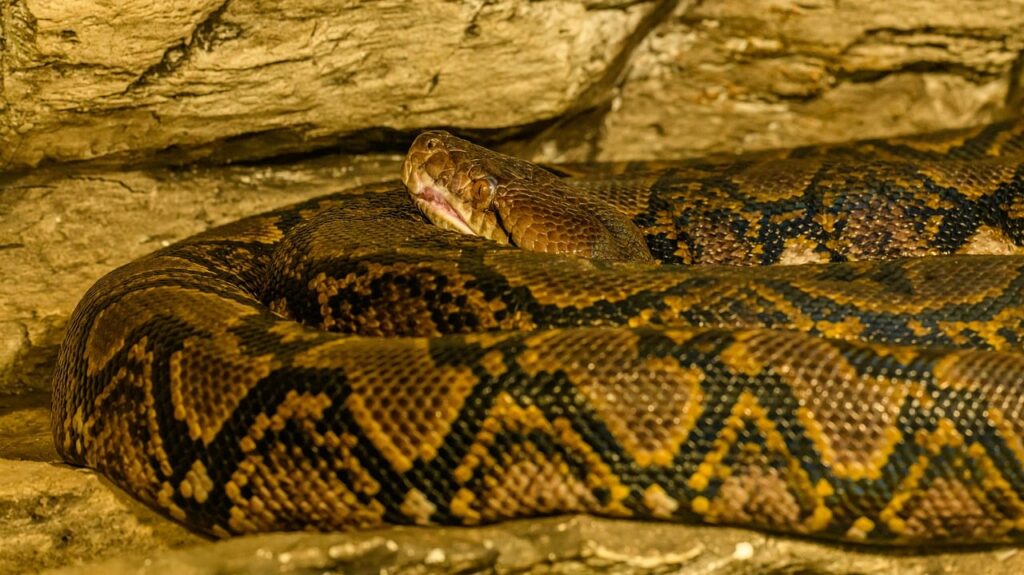
RETICULATED PYTHON
Malayopython reticulatus
The reticulated python is a species of python native to South and Southeast Asia. It is the longest snake in the world and the third heaviest after the green anaconda and the Burmese python. Specimens have been recorded reaching a length of more than 7 metres and weighing more than 160kg.
Like all pythons, it is a non-venomous constrictor. It is an ambush predator, usually waiting until prey comes within striking range before trapping it in its rings and killing it by constriction. Its natural diet includes mammals and occasionally birds.
¿Did you know?
Its name ‘reticulated’ comes from the intricate and beautiful pattern of its skin, which resembles a net (or ‘lattice’). This pattern helps camouflage it in its environment, especially in the shadows of dense vegetation.
RED TEGU
Tupinambis rufescens
It is a large lizard with a rather robust head and short limbs. In general, the tail is longer than the body.
The dorsal area is reddish in colour with different shades. It has dark transverse bands and irregular spots spaced and crossed laterally by a line of somewhat blurred white spots from the ear to the hind limbs.
Whitish spots can be seen on the limbs and towards the belly a reddish, almost orangey colour.
¿Did you know?
It is a shy and not very aggressive animal, which flees at the slightest sign of danger, but if it feels cornered, it opens its mouth and emits an intimidating whistle.
It is one of the fastest lizards. They can run at speeds of 32km/h.
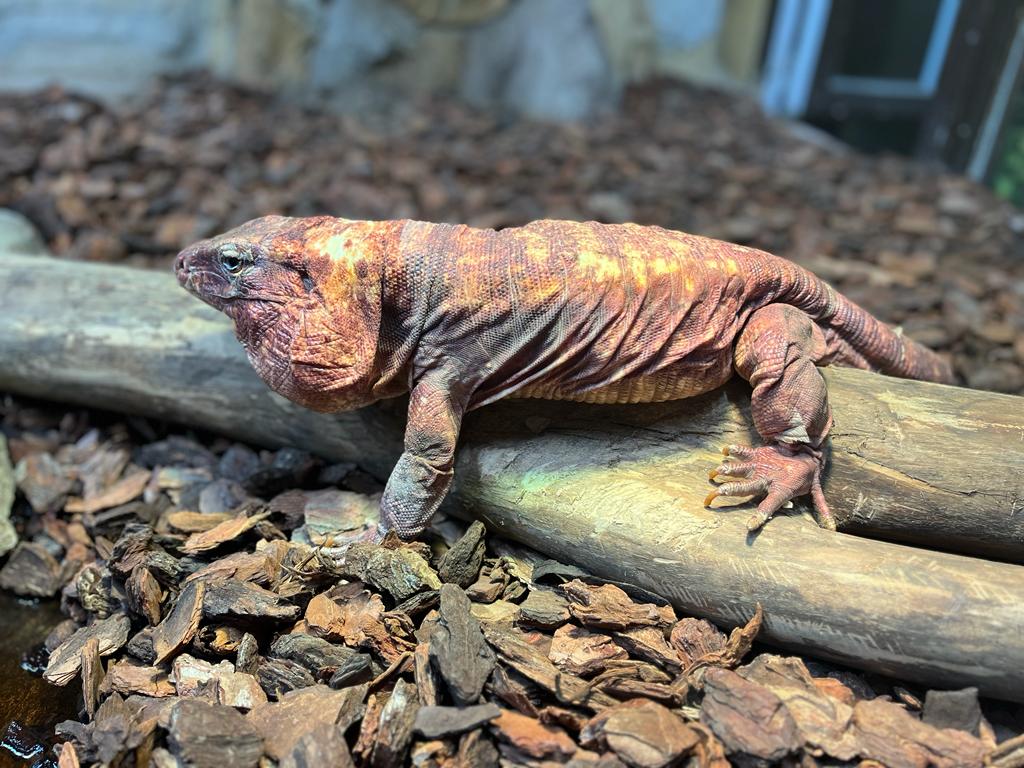
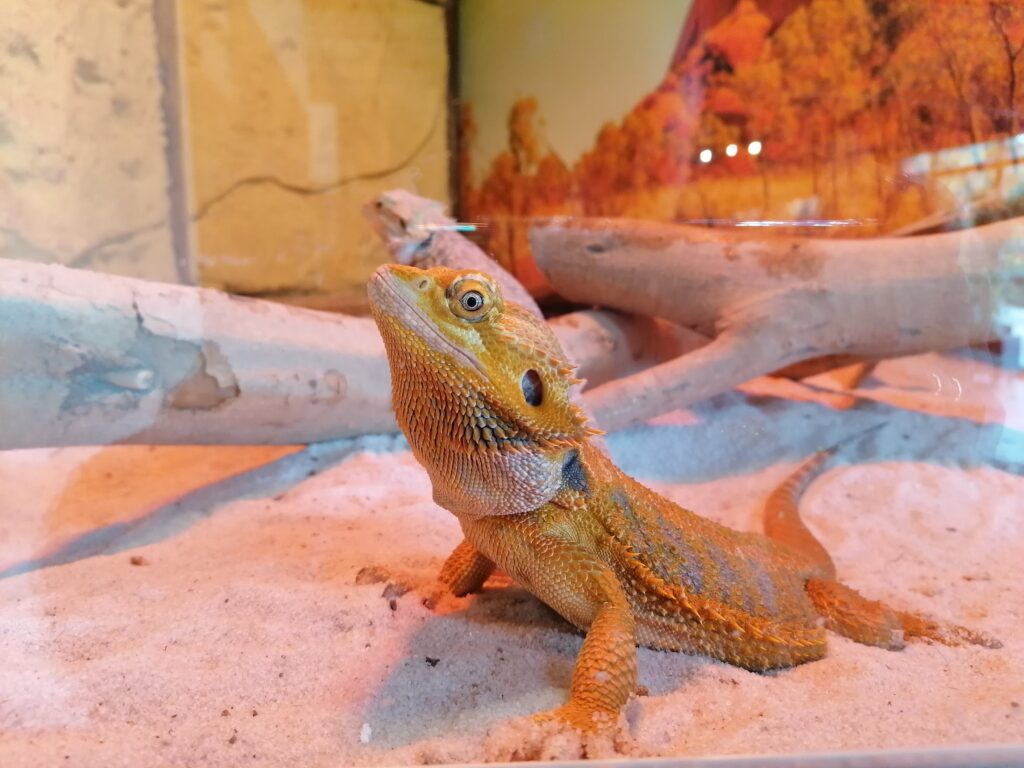
BEARDED DRAGON
Pogona vitticeps
The bearded dragon is a saurian native to the desert areas of Australia.
It is a diurnal animal. Its triangular-shaped head has thorny scales on the underside which, when bristling, resemble a beard, hence its name.
They can slightly change their colour to regulate the body temperature and also to express their mood.
Did you know?
Males show their dominance by moving the head up and down rapidly, often with a bristling beard.